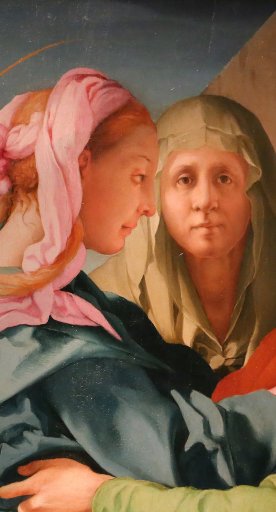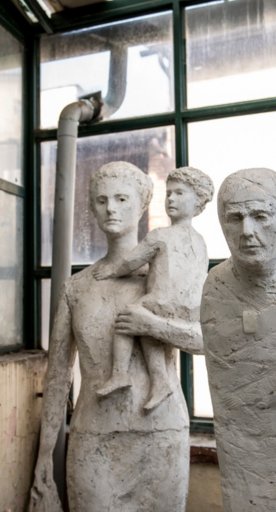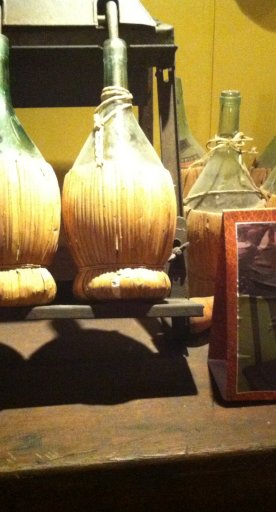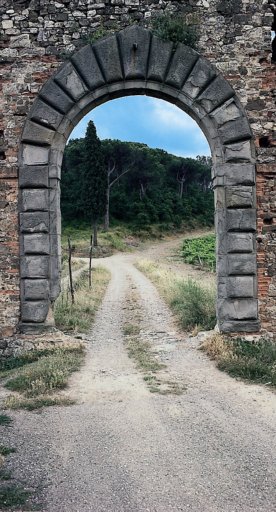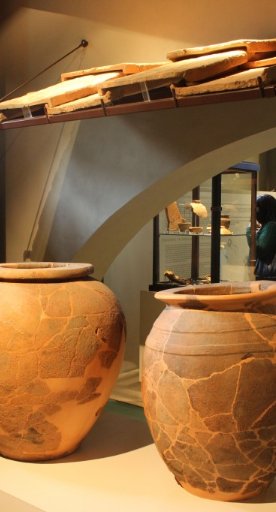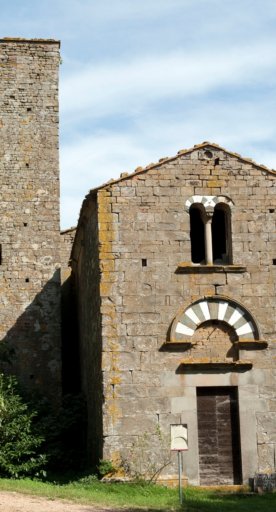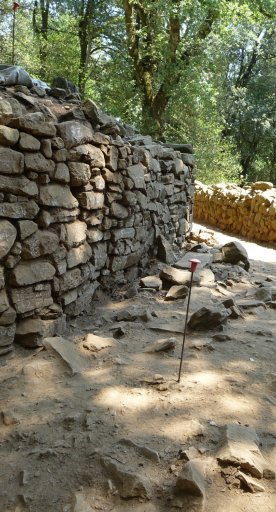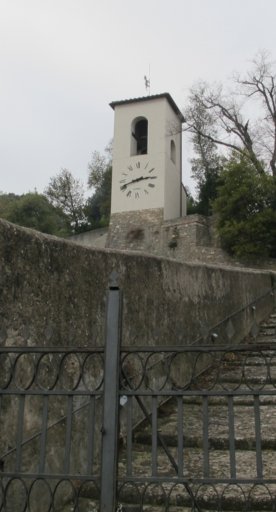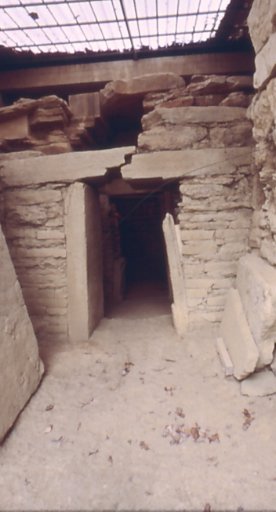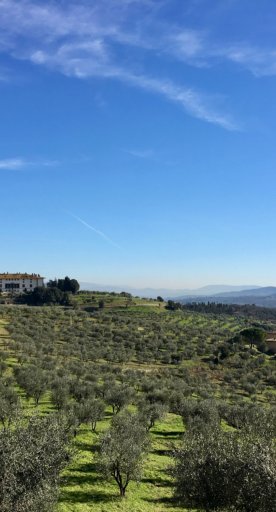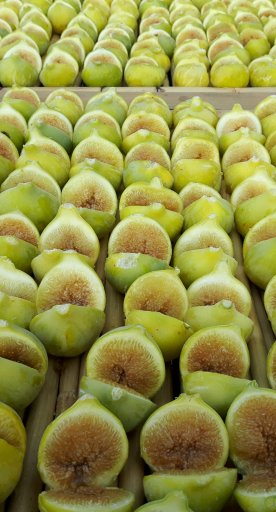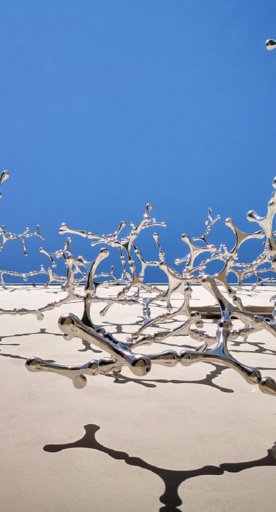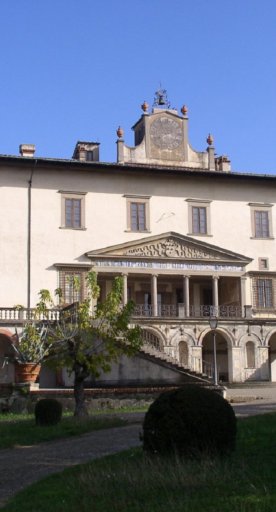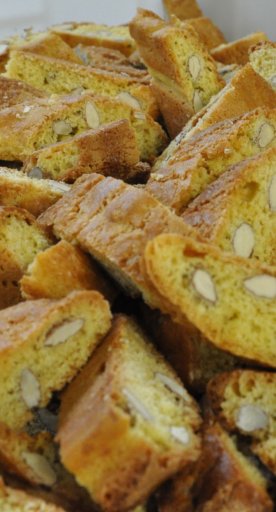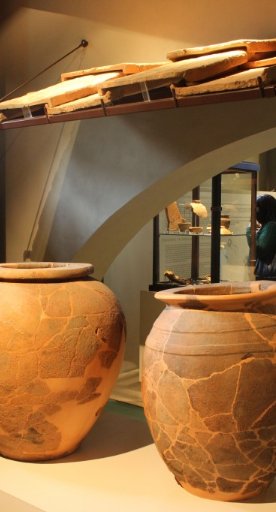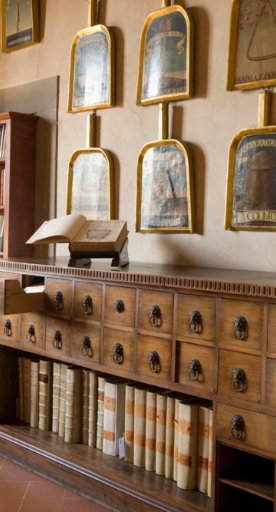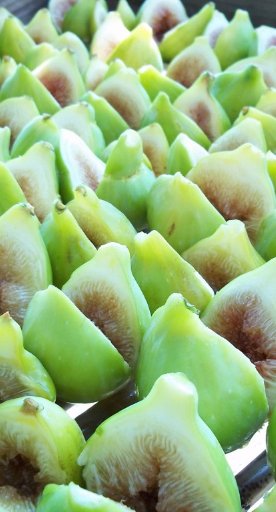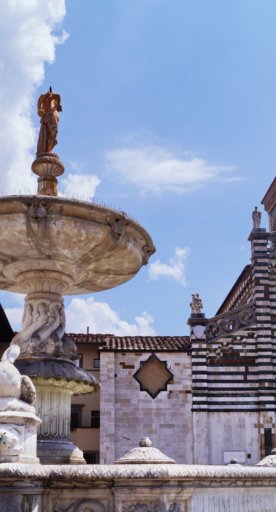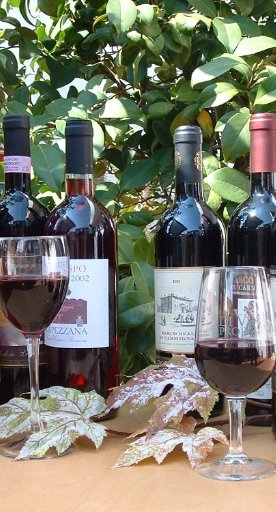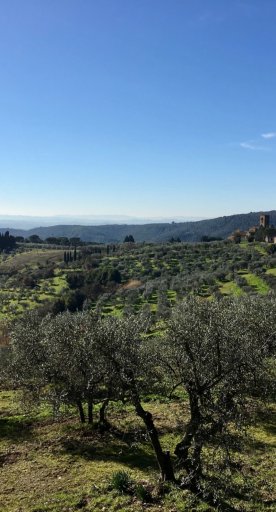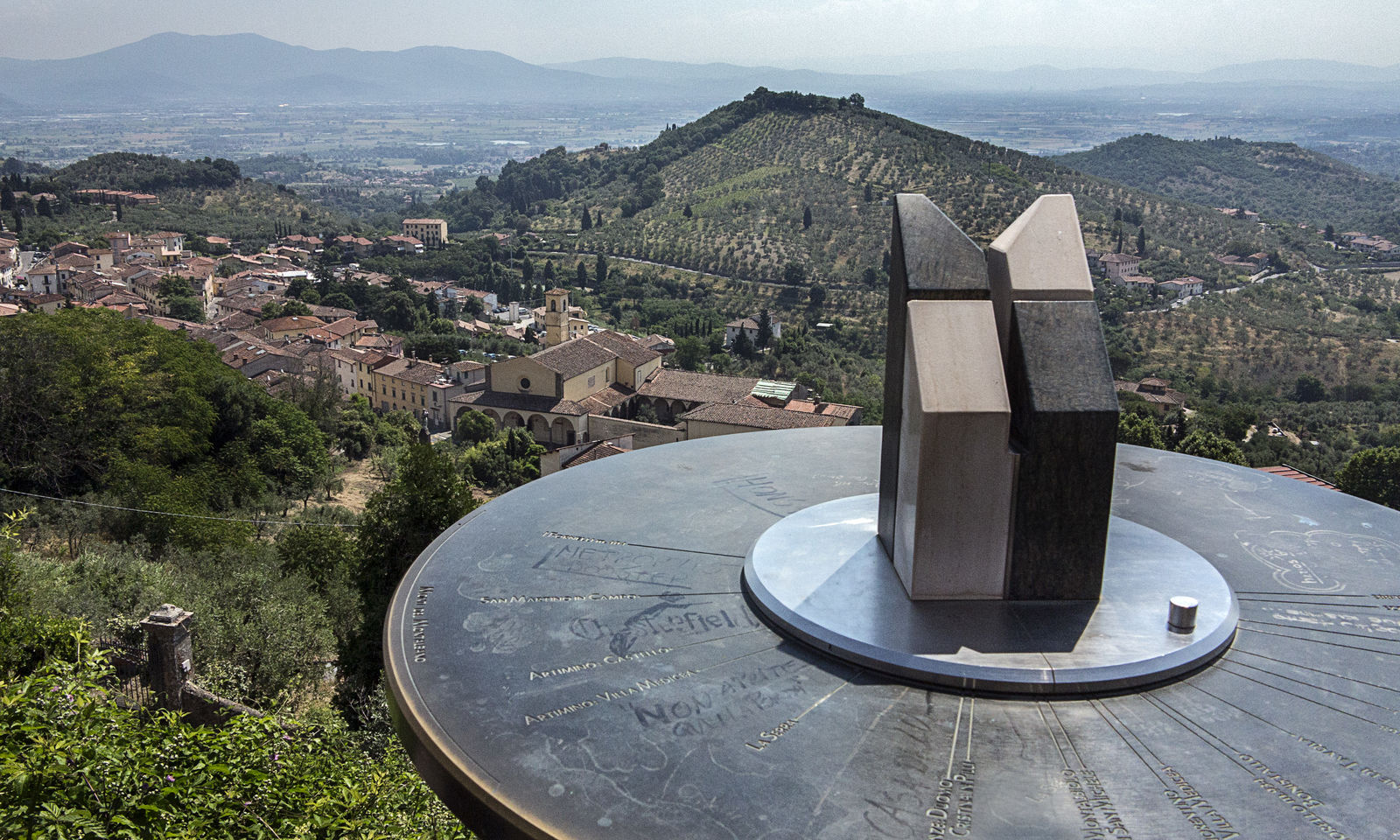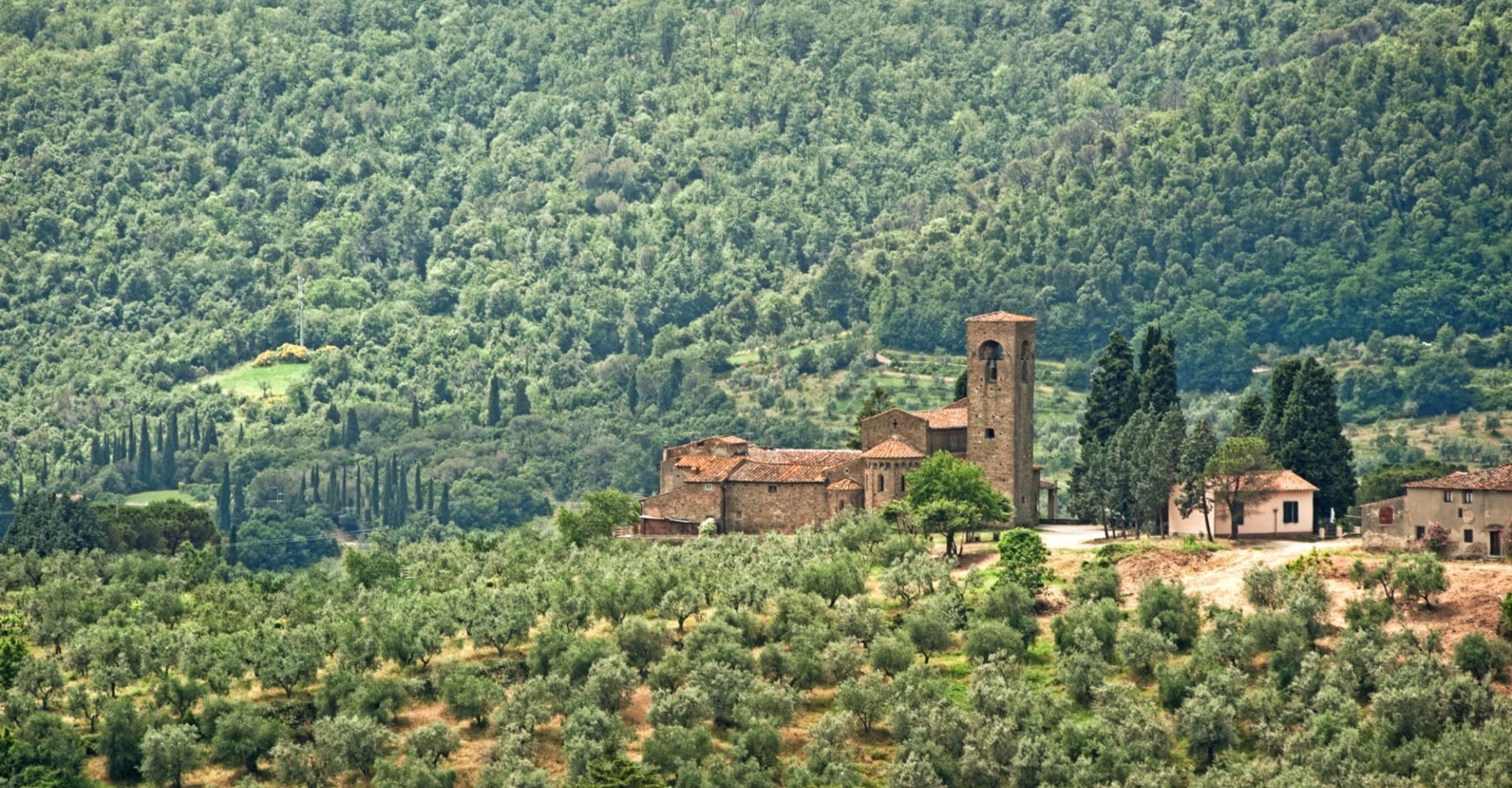
Carmignano
Landscape, history and great food on the gentle hills of Montalbano
The Carmignano territory stretches between the gentle hills of Montalbano and could even be defined as "a little Tuscany" given that it contains everything that has made this region famous and loved all over the world: great art, landscape, archeology, wine and wonderful food.
In addition to the small but interesting village of the same name, the municipality includes other hamlets that are sattered with villas, parish churches and churches of considerable cultural and artistic importance, with some that even contain true treasures. The combination of these places, together with a rich food and wine tradition, contributes to the definition of this place as a corner of paradise surrounded by greenery.
What to see in Carmignano
For over a thousand years, the medieval fortress of Carmignano has dominated an extraordinary 360-degree landscape, including the valleys of the provinces of Prato, Pistoia and Florence. Its strategic position has made it the subject of regular struggles.
The fortress is accessed via a pedestrian path that starts from the thirteenth-century Church of Saints Michael and Francis, inside which is the Visitation, one of Pontormo's best-known works and one of the most fascinating of Florentine Mannerism.
As evidence to the importance of the food and wine culture of the area, the spaces that once belonged to the Niccolini cellars now house the Carmignano Vine and Wine Museum, a journey to discover the wine production and the history of farming in this area.
For over a thousand years, the medieval fortress of Carmignano has dominated an extraordinary 360-degree landscape, including the valleys of the provinces of Prato, Pistoia and Florence. Its strategic position has made it the subject of regular struggles.
The fortress is accessed via a pedestrian path that starts from the thirteenth-century Church of Saints Michael and Francis, inside which is the Visitation, one of Pontormo's best-known works and one of the most fascinating of Florentine Mannerism.
As evidence to the importance of the food and wine culture of the area, the spaces that once belonged to the Niccolini cellars now house the Carmignano Vine and Wine Museum, a journey to discover the wine production and the history of farming in this area.
Nearby
The peaks of Montalbano rarely exceed 600 meters above sea level and the landscape of Carmignano in the Prato area is characterized by hills with woods, vineyards, olive groves and arable land dotted with villas, Etruscan remains, and churches.
Don't miss some of the most important traces of the Etruscan civilization: the Tumulo di Montefortini and the Tumulo dei Boschetti, monumental tombs in Comeana that date back to the orientalizing period (7th century BC), the necropolis of Prato Rosello in the hills of Artimino, and the archaeological area of Pietramarina in its panoramic position in San Giusto.
Taken together, these areas make up the Carmignano Archaeological Park, which also includes the Francesco Nicosia Archaeological Museum. Not far from the museum set the splendid La Ferdinanda Medici Villa in Artimino, the most important and majestic of the residences that characterize the Carmignano area. Also called Villa dei Cento Camini (Villa of the one hundred chimneys – it has one for each room), it was commissioned by the Grand Duke Ferdinando I de 'Medici as the family's summer residence. It was designed by the architect Bernardo Buontalenti and built in just 4 years, from 1596 to 1600. In 2013, it was declared a UNESCO World Heritage Site.
Among the other noteworthy villas, you'll find the 16th-century Villa di Trefiano, also by Buontalenti.
In addition to the period residences, the hills are also scattered with important churches such as the historic Parish church of San Leonardo at the gates of the village of Artimino. It's one of the most significant examples of Lombard-Romanesque architecture in Tuscany. You can also admire the beautiful and austere Abbey of San Giusto al Pinone (currently not open to visitors and awaiting major renovations).
Lovers of contemporary art have the opportunity to visit one of the most notable outdoor sculptures in Europe dedicated to a single artist: the Quinto Martini Museum Park in Seano.
The peaks of Montalbano rarely exceed 600 meters above sea level and the landscape of Carmignano in the Prato area is characterized by hills with woods, vineyards, olive groves and arable land dotted with villas, Etruscan remains, and churches.
Don't miss some of the most important traces of the Etruscan civilization: the Tumulo di Montefortini and the Tumulo dei Boschetti, monumental tombs in Comeana that date back to the orientalizing period (7th century BC), the necropolis of Prato Rosello in the hills of Artimino, and the archaeological area of Pietramarina in its panoramic position in San Giusto.
Taken together, these areas make up the Carmignano Archaeological Park, which also includes the Francesco Nicosia Archaeological Museum. Not far from the museum set the splendid La Ferdinanda Medici Villa in Artimino, the most important and majestic of the residences that characterize the Carmignano area. Also called Villa dei Cento Camini (Villa of the one hundred chimneys – it has one for each room), it was commissioned by the Grand Duke Ferdinando I de 'Medici as the family's summer residence. It was designed by the architect Bernardo Buontalenti and built in just 4 years, from 1596 to 1600. In 2013, it was declared a UNESCO World Heritage Site.
Among the other noteworthy villas, you'll find the 16th-century Villa di Trefiano, also by Buontalenti.
In addition to the period residences, the hills are also scattered with important churches such as the historic Parish church of San Leonardo at the gates of the village of Artimino. It's one of the most significant examples of Lombard-Romanesque architecture in Tuscany. You can also admire the beautiful and austere Abbey of San Giusto al Pinone (currently not open to visitors and awaiting major renovations).
Lovers of contemporary art have the opportunity to visit one of the most notable outdoor sculptures in Europe dedicated to a single artist: the Quinto Martini Museum Park in Seano.
Events
Between the end of September and the beginning of October, the traditional Festa di San Michele takes place over the course of three days in Carmignano. It consists of folkloric parades and the popular Palio dei Ciuchi, a challenge between the four districts of the city that compete for victory in a racetrack set up in the Piazza del Comune.
Every third Sunday of October, there's the Benvenuto Fico Secco, a fair dedicated to one of the most typical and well-known products of Carmignano.
Between the end of September and the beginning of October, the traditional Festa di San Michele takes place over the course of three days in Carmignano. It consists of folkloric parades and the popular Palio dei Ciuchi, a challenge between the four districts of the city that compete for victory in a racetrack set up in the Piazza del Comune.
Every third Sunday of October, there's the Benvenuto Fico Secco, a fair dedicated to one of the most typical and well-known products of Carmignano.
Typical dishes and products
Carmignano surprises even from a culinary point of view. Several trattorias allow you to rediscover the historic flavors of traditional cuisine and to taste the excellent wines produced in this territory, starting with the most prestigious, Carmignano DOCG. It has Sangiovese as a base vine, accompanied by Black Canaiolo, Cabernet Franc and Cabernet Sauvignon, with the presence of white grapes and other red grape varieties.
Alongside this, there are four important DOCs: Barco Reale di Carmignano, Rosato di Carmignano, Vin Santo di Carmignano and Vin Santo di Carmignano Occhio di Pernice.
Together with the excellent wine, Carmignano also seduces the palate with its desserts. It's home to famous figs, in particular the fico dottato. Best accompanied with a glass of Vin Santo DOC, it can be found in special pastry recipes. The Carmignano fig is found in particular in winter and on the occasion of the Christmas holidays, but it's also used in many unexpected savory recipes.
Speaking of desserts and combinations with Vin Santo, we must mention Amaretti. The recipe dates back to the late nineteenth century, and was created by the pastry chef Giovanni Bellini, owner of a sweets shop located in the center of the town.
The cultivation of olive trees in the area was introduced by the Etruscans, but abandoned after the fall of the Roman Empire. However, it was kept alive by the religious members of the convents and abbeys. The long tradition, made up of oil mills, farms and high-quality olive production, has led to the recognition of Tuscan extra virgin olive oil as IGP, with the geographical mention of "Montalbano".
Like other typical products, this too is celebrated along the Montalbano Wine and Oil Route.
Carmignano surprises even from a culinary point of view. Several trattorias allow you to rediscover the historic flavors of traditional cuisine and to taste the excellent wines produced in this territory, starting with the most prestigious, Carmignano DOCG. It has Sangiovese as a base vine, accompanied by Black Canaiolo, Cabernet Franc and Cabernet Sauvignon, with the presence of white grapes and other red grape varieties.
Alongside this, there are four important DOCs: Barco Reale di Carmignano, Rosato di Carmignano, Vin Santo di Carmignano and Vin Santo di Carmignano Occhio di Pernice.
Together with the excellent wine, Carmignano also seduces the palate with its desserts. It's home to famous figs, in particular the fico dottato. Best accompanied with a glass of Vin Santo DOC, it can be found in special pastry recipes. The Carmignano fig is found in particular in winter and on the occasion of the Christmas holidays, but it's also used in many unexpected savory recipes.
Speaking of desserts and combinations with Vin Santo, we must mention Amaretti. The recipe dates back to the late nineteenth century, and was created by the pastry chef Giovanni Bellini, owner of a sweets shop located in the center of the town.
The cultivation of olive trees in the area was introduced by the Etruscans, but abandoned after the fall of the Roman Empire. However, it was kept alive by the religious members of the convents and abbeys. The long tradition, made up of oil mills, farms and high-quality olive production, has led to the recognition of Tuscan extra virgin olive oil as IGP, with the geographical mention of "Montalbano".
Like other typical products, this too is celebrated along the Montalbano Wine and Oil Route.
